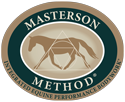By Coralie Hughes, MMCP, Coach and Instructor
The following analysis of the biomechanics of jumping by MMCP and Advanced Instructor Coralie Hughes has been developed based on a current understanding of the literature concerning how the horse’s musculo-skeletal system works, how the horse uses his body and from many hours watching slow motion videos of jumpers working at the highest level.
The complexities of isometric, concentric and eccentric muscle contraction have been intentionally omitted to make it easier to reflect on the connection of this material to Masterson Method bodywork for the jumper. There are two parts in this series examining the four phases of how the horse jumps: the Approach, Take-off, Suspension and Landing phases. This month we’ll look at the Approach and Take-off phases. Next month we’ll look at the Suspension and Landing phases. I know that’s a long time for the horse to be in the air, but let’s hope the time passes quickly.
“If one were to design an animal to carry people over large jumps at high speeds, it probably wouldn’t look like a horse with a large heavy head, a heavy gut and a relatively rigid spine. The horse can be a fabulous jumper because of his heart and courage, an innate athleticism, the power of momentum, and the ability to create enough lift from the front end and a back-end takeoff impulsion.
From a biomechanical perspective, it is helpful to break down the process of jumping into phases:
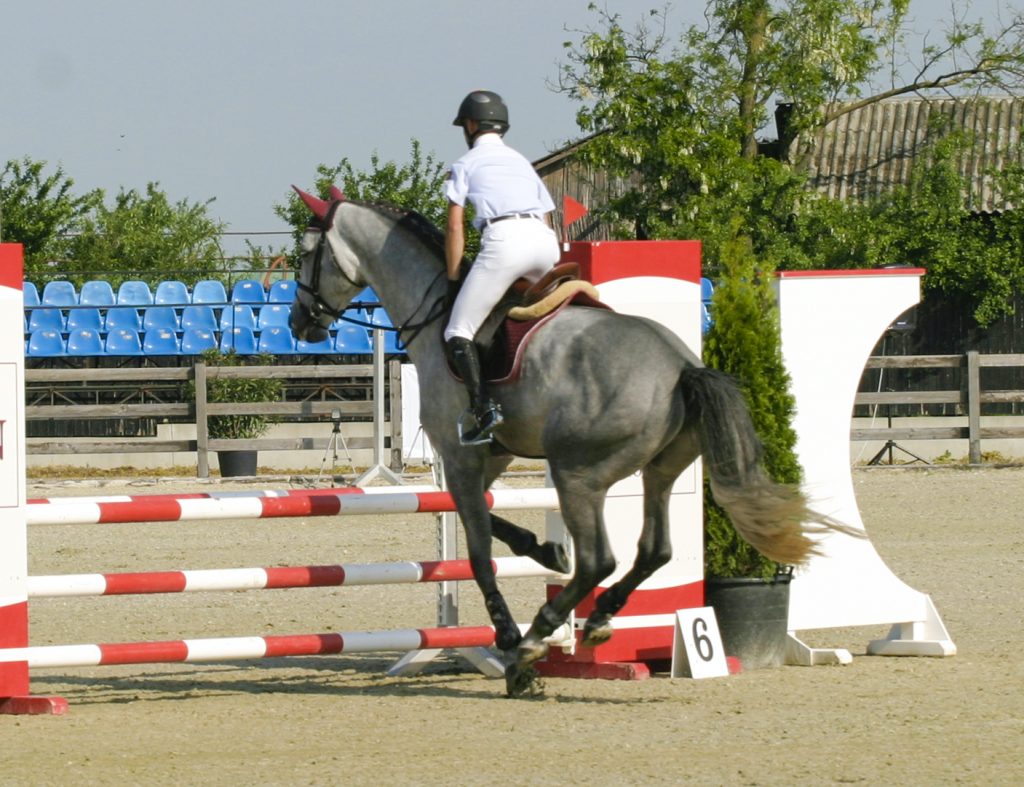
Approach:
In the approach the horse raises his head to better see the jump due to how the equine eye functions. It is critical that his head and neck, with an extended nose, are free to allow him to get a good look at the jump early in the approach. He needs to be in a balanced canter with more weight on the backend so he can better adjust his balance as needed for the take-off. The last few strides before the jump can be compared to a basketball player making a running shot. The basketball player runs, increases the bend in his knees and then propels himself upwards to dunk the ball.
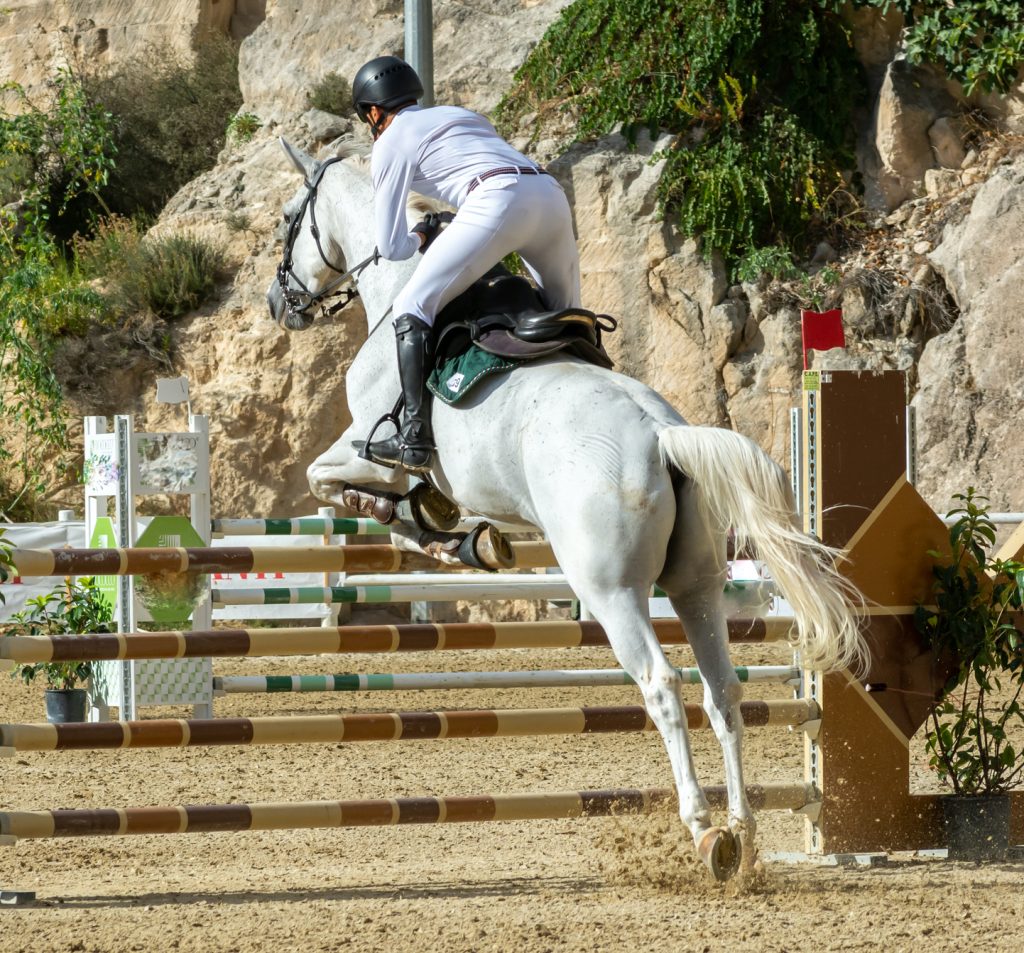
Take-off:
The take-off is a two part shift of energy involving the front end and the back end. The amount of lift up (front end) and thrust forward (back end) determine the height, width, distance and speed of the leap.
The front end:
The role of the front end in take-off is complicated and comprises multiple actions of the structures of the head, neck, legs, shoulders and back. During the approach strides, the horse lowers his center of gravity by lowering the front end at the base line of the fence, maximally extending the fetlock joints. This increases the tension and therefore the spring energy stored in the fetlock joint tendons and ligaments. This stored energy is released when the muscles of the front legs powerfully contract and straighten the fetlocks via the superficial and deep digital flexor tendons. This helps to spring the horse up in the front end.
Also, as the horse prepares for take-off, the head and neck lower as the contraction of the brachiocephalic muscles (which run from head to forelimb) brings the forelimbs forward and up. As the forelimbs leave the ground, they push the front end up. The horse then lifts his head and neck to lighten the forehand.
Assisted by the lift of the head and neck, the front end is further pushed into the air by the contraction of the triceps brachii, biceps brachii and supraspinatus muscles, which straighten the joints of the shoulder and elbow. In this way, take off is initiated by the forelimbs, which push the front end up. He needs to telescope his head and neck out for balance and to direct the energy.
Because the horse is cantering, the trailing (non-leading) forelimb has the larger role in propelling the horse upward. Horses often have a preferred leg to push off from which can cause them to prefer one canter lead over another. As the trailing forelimb stretches out, a slight braking force converts forward movement to upward momentum as the fetlock joints are forcefully contracted by the muscles.
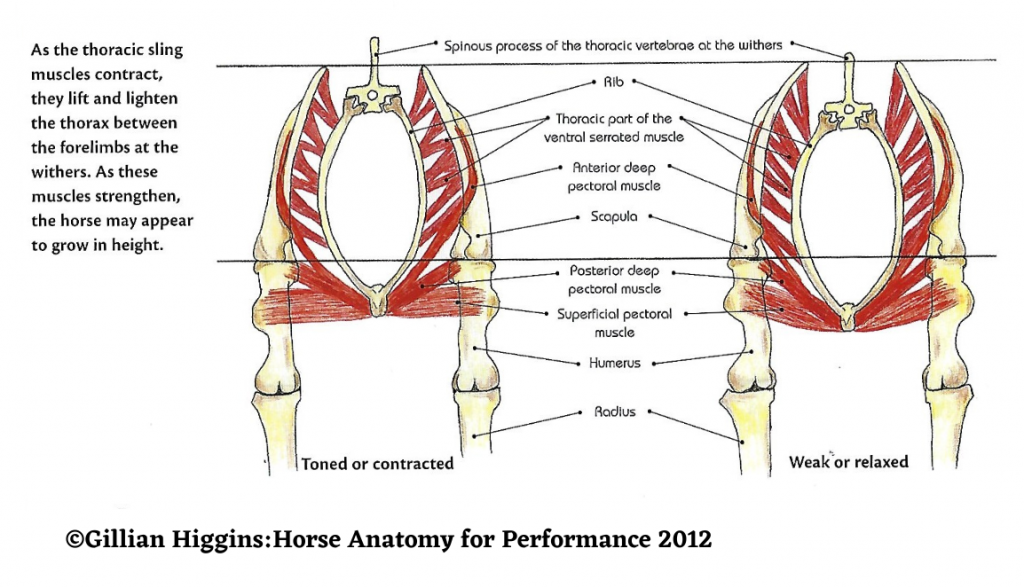
The role of the thoracic sling:
The thoracic sling is a system of muscles that lies deep against the skeleton, beneath the shoulder blades. It surrounds the thorax or chest of the horse. The most important muscles of this sling are the pectoral muscles of the front of the chest and between the front legs and the ventral serratus muscles that lie against the rib cage. If the horse is free (unrestricted by excessive muscle tension) in the withers and shoulders and the muscles of the thoracic sling are properly toned, the thoracic sling has the power to lift the thorax of the horse between the shoulder blades. This is possible because the scapulae of the horse are not fixed by skeletal joints but rather connected to the body by soft tissue structures. The withers rise relative to the top of the shoulder blades in a horse with proper strengthening of the thoracic sling if the thoracic sling muscles are not restricted by excessive negative tension. At the same time the thoracic sling muscles contract to lift the thorax between the scapulae, the horse’s center of gravity shifts back as the body rises between the scapulae to align with the raised head and neck. Incidentally, the thoracic sling provides critical concussive support as well as enabling the horse to lift his front end.
The longissimus dorsi, or long back muscle, runs from the sacrum all along the back and attaches to the lower cervical vertebrae (with additional attachments to the cervical spine). When the hind legs are on the ground, powerful contraction of the longissimus can produce a lever action on the front end of the horse, participating in lifting the front end of the horse off the ground. From the slow motion videos of show jumpers working at the highest level, the front end appears to levitate off the ground without the aid of the hind legs, which are typically not even on the ground yet as the front end is coming up. It looks a bit miraculous in slow motion.
The lift of the front end of the horse in preparation for the jump is, therefore, a symphony of:
• shifts in center of gravity and balance through changes in position of the neck and head
• increased loading energy on joints which is released by powerful muscular contraction
• the action of the thoracic sling to elevate the thorax and withers
• the action of the large back muscle to raise the front end from the base of the neck
• and sheer momentum
To take maximum advantage of momentum to make the job easier, this must all be done fluidly.
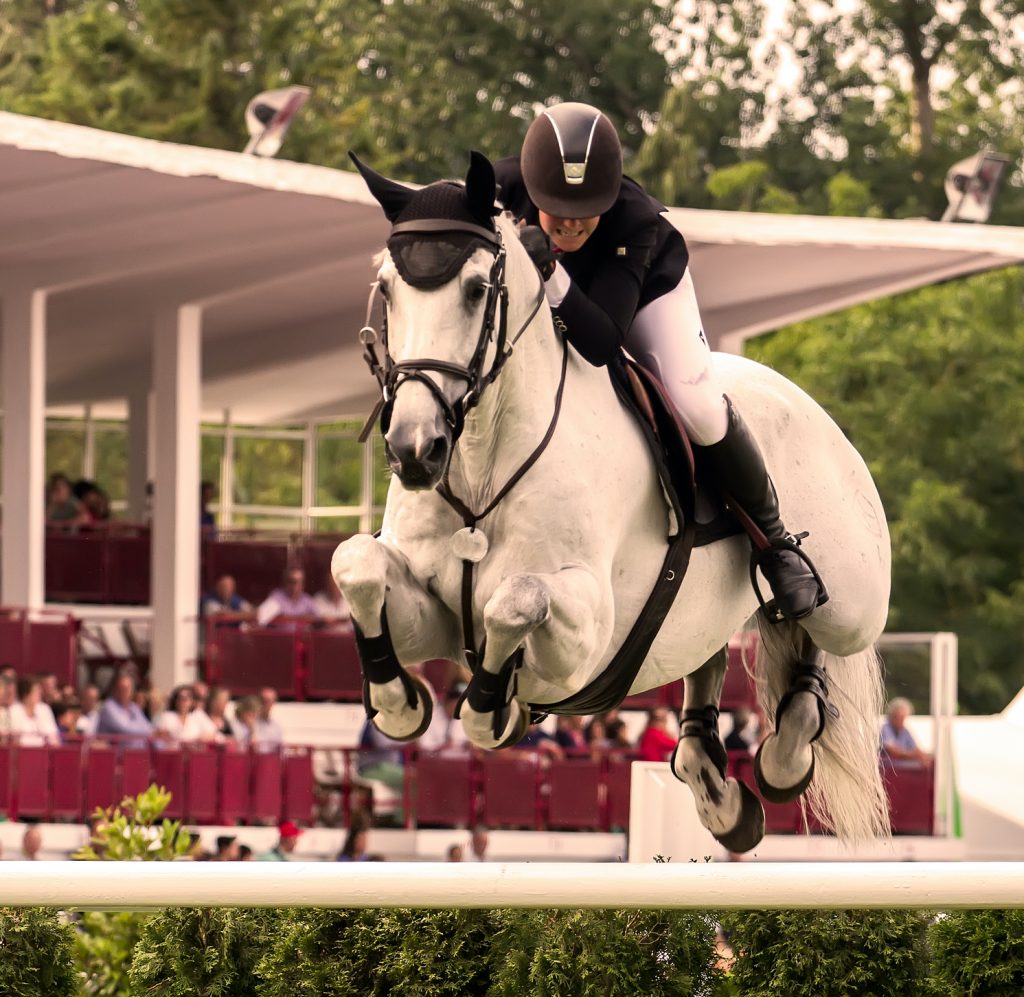
The back end:
As mentioned earlier, when the front end is lifting up in the push-off, the hind legs of the horse are generally off the ground when jumping higher fences. The hind legs are brought powerfully under the center of gravity of the horse by the action of the tensor fascia lata, vastus and quads. As the hind legs are brought forward under the body, the sacro-lumbar joint flexes, and the lumbar vertebrae round. The psoas muscle group lies deep within the horse and runs from under the lumbar to the underside of the pelvis. This muscle group tilts the pelvis and assists in bringing the hind legs well under the body.
When the hind feet touch the ground, energy is once again stored in the tendons and ligaments of the significantly extended fetlock joints. Push-off comes as the fetlocks contract via powerful action of the digital flexor muscles acting on the tendons. There is a critical moment before push off when the psoas, hamstrings, abdominal muscles, tensor fascia lata and quads, groin and gluteals are holding the horse at a critical angulation of the hind end with great flexion of the sacral lumbar junction. This requires enormous strength because the front of the horse is off the ground and the horse is carrying tack and a rider.
Roughly at the same time as the contraction of the fetlocks, the hamstrings contract to extend the hip joint. This initiates the upward thrust by driving the feet against the ground, propelling the horse upwards. The powerful gluteal muscles of the hind-quarters are activated to push the body forwards and upwards. The gluteus medius muscle connects with the longissimus dorsi muscle. At this point the gluteal muscles work with the longissimus dorsi muscles to help raise the forehand.
As the hind feet leave the ground, the head and neck telescope forward which utilizes the extensor muscle chain. This allows maximum extension of the hip joint as the horse thrusts off the ground. As the hind legs leave the ground, a reflex is triggered to fold the front legs, bringing the shoulders up through the action of the thoracic sling. At take-off the hind limbs will be extended and the forelimbs will flex. The head and neck are extended forward..
To understand these muscle groups and the flexibility they need to have in order to accomplish the feat of jumping, is to understand how important it is to release tension and increase range of motion in the horse’s body. The Masterson Method® teaches riders, trainers and bodyworkers to do just that through a series of well crafted techniques.
Next month, in Part 2, we’ll see the horse finish the jump as we look at the Suspension and Landing phases.
Learn more about how to work with Hunters and Jumpers go to page 181 of the Beyond Horse Massage Book. or sign up for a Weekend Seminar to learn more about how to work with these amazing athletes.
Photo credit kindly to Lovatt Pet Photography
